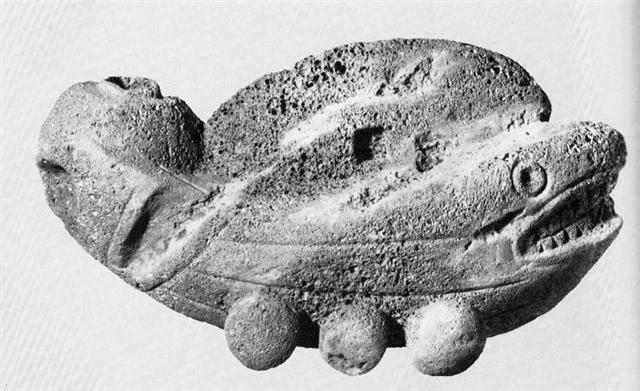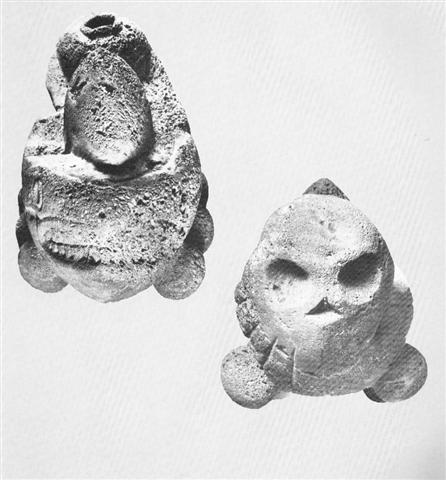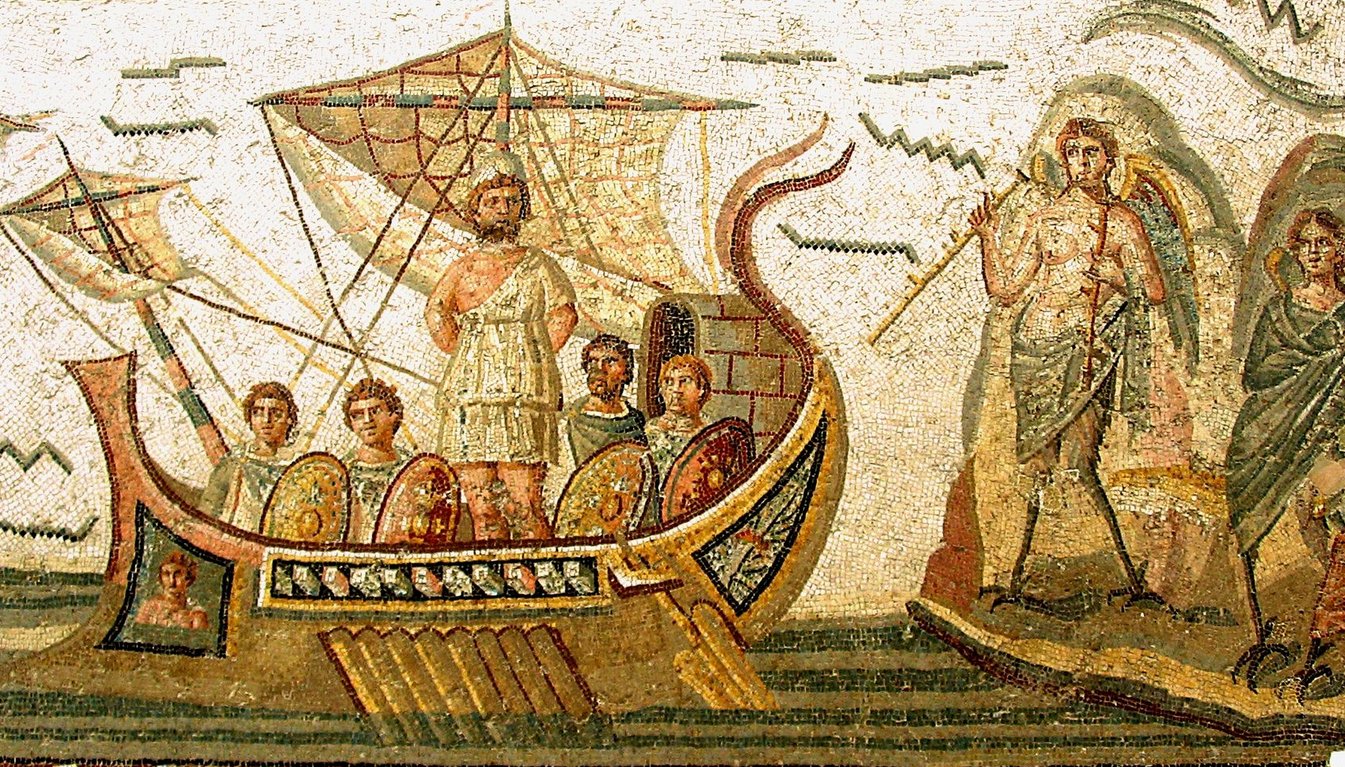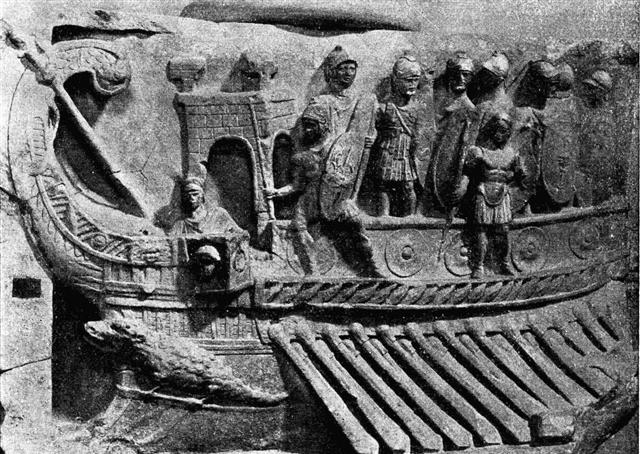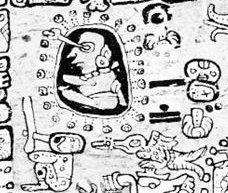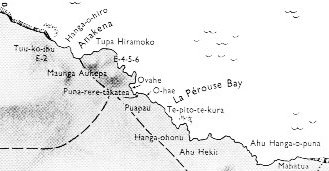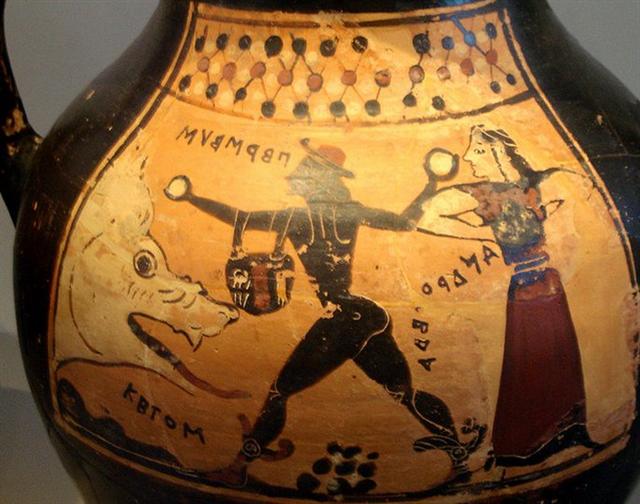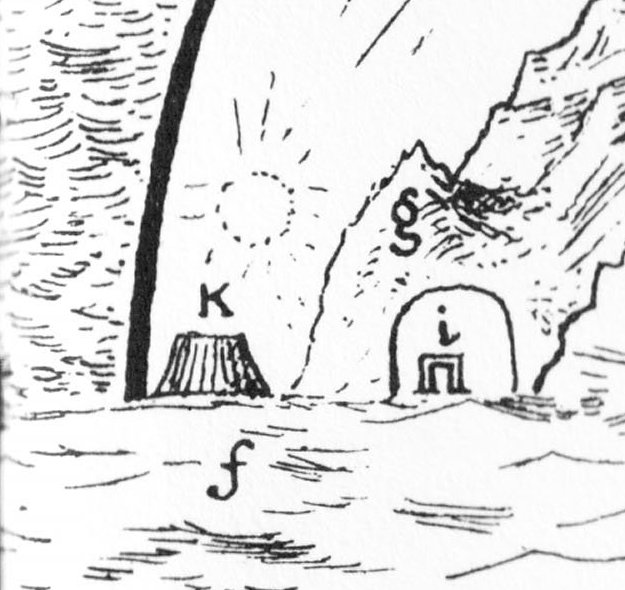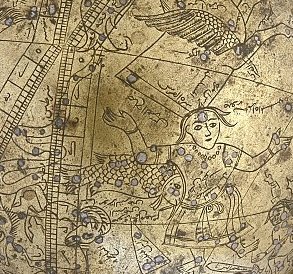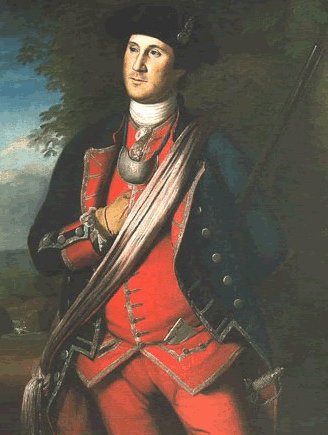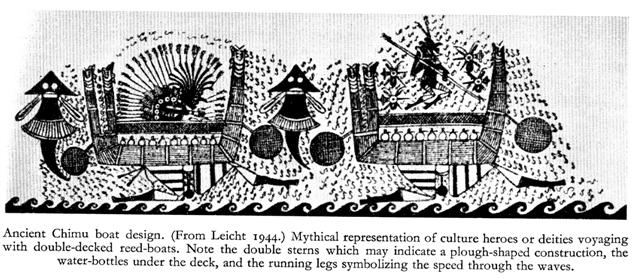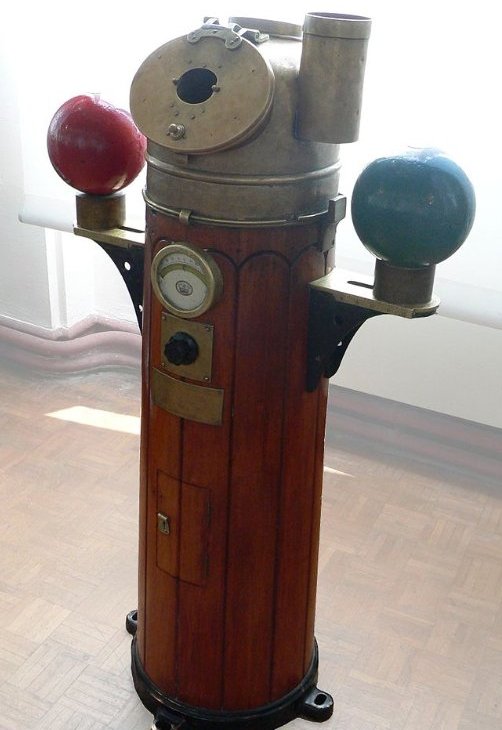A pentagonal 'earth oven' (umu, cooking pit) was at the tail of the stone Sun fish, baring his mouthful of teeth. Further back followed a skull of death and midships there was an open door of entrance:
Was there a fire-place at the stern also on the Roman ships?
I had thought the brick chamber was a little house for the navigator. In the night he could have looked out through a set of mirrors for the stars.
But in daytime this same house could have been used for the kitchen fire. Polynesian ships had sand on board for their cooking places. Given the position of Pua Katiki - at the highest point on the Poike peninsula in the east - the cave into which the mortally wounded Kuukuu was carried could have been a place corresponding to the navigator's room close to the stern of the Roman ships. The cave for Kuukuu was, according to Manuscript E (pp. 27-30), not at Hanga Hoonu - 4 dream soul stations later than Pua Katiki - but at Oromanga, i.e. 8 dream stations later than Pua Katiki:
... After they had thrown the fish on the beach, Ira said, 'Make a fire and prepare the fish!' When he saw that there was no fire, Ira said, 'One of you go and bring the fire from Hanga Te Pau!' One of the young men went to the fire, took the fire and provisions (from the boat), turned around, and went back to Hanga Hoonu. When he arrived there, he sat down. They prepared the fish in the fire on the flat rocks, cooked them, and ate until they were completely satisfied. Then they gave the name 'The rock, where (the fish) were prepared in the fire with makoi (fruit of Thespesia populnea?) belongs to Ira' (Te Papa Tunu Makoi A Ira). They remained in Hanga Hoonu for five days.
The kuhane of Hau Maka flew counterclockwise - like the Sun south of the equator. This means Hanga Hoonu ought to be in the northeast and there it was, named Hanga-ohonu on the map:
Oromanga was a position further towards the west on the other side of the mountain Hau Epa (Maunga Auhepa on the map) and at the Anakena bay: ... The dream soul went to the other side of the mountain Hau Epa. As soon as the dream soul looked around, she saw the sand (beach), which was very white and light. She remained there and explored everything. After she had looked around carefully, the dream soul of Hau Maka said, 'Ah! This is the place that will serve as a residence for the king. She named the place 'Oromanga A Hau Maka O Hiva' ... There were 6 stone heaps outside the Kuukuu cave, probably representing Tau-ono, the Pleiades (Mata-riki, the small eyes). But on the Roman ships there was a tradition with 2 'stones' above the 'stove':
I suggest this model was very ancient, basically meaning there were 2 stars ('stones') announcing the return of the Sun - as observed north of the equator: ... string games could be resumed after it was clear that the Sun had managed to leave the horizon and was rapidly gaining in altitude: 'Before the sun starts to leave the horizon ... when it shows only on the horizon, ... then string games were no longer allowed as they might lacerate the sun. Once the sun had started to go higher and could be seen in its entirety, string games could be resumed, if one so wished. So the restriction on playing string games was only applicable during the period between the sun's return and its rising fully above the horizon ... ... I knew of two men who lived in another settlement on the Noatak river. They did not believe in the spirit of the string figures, but said they originated from two stars, agguk, which are visible only when the sun has returned after the winter night. One of these men was inside a dance-house when a flood of mist poured in ... His two companions rapidly made and unmade the figure 'Two Labrets', an action intended to drive away the spirit of the string figures, uttering the usual formula ... but the mist kept pouring in ... ... Again, in a diary entry dated 18 December 1913 Jenness notes the same Alak telling him that 'they never played cat's cradles while two stars called agruk were visible, just before the long days of summer... They played other games then, like whizzer [a noise maker] ... ... Alak's comments indicate that, for the Noatak area at least, the appearance of Aagjuuk, rather than the Sun, signalled the end of the string-game season. And the opinion ... that string figures came from, and are therefore related to, Aagjuuk may have given rise to the prohibition against playing them after the solstice appearance of these stars. It is also possible that the string game mentioned by Alak - 'Two Labrets' - rapidly made and unmade in an attempt to drive off the 'string figure spirit', was intended to symbolize Aagjuuk's two stars and so confound the constellation with its own likeness or spirit. ... Etalook refers to the 'aagruuk' as 'labrets' (the circular lower-lip ornaments of some Western Arctic Eskimo groups, certainly evoke an astral image if we recall that early Inuit graphic representations of stars were usually circular ...) giving them, it seems, an alternate name, ayaqhaagnailak, 'they prohibit the playing of string games': They are the ones that discourage playing a string game... That's what they're called, ayaqhaagnailak, those two stars... When the two stars come out where is no daylight, people are advised not to play a string game then, but with hii, hii, hii... toy noisemakers of wood or bone and braided sinew ...
... The Katawihi distinguish two rainbows: Mawali in the west, and Tini in the east. Tini and Mawali were twin brothers who brought about the flood that inundated the whole world and killed all living people, except two young girls whom they saved to be their companions. It is not advisable to look either of them straight in the eye: to look at Mawali is to become flabby, lazy, and unlucky at hunting and fishing; to look at Tini makes a man so clumsy that he cannot go any distance without stumbling and lacerating his feet against all obstacles in his path, or pick up a sharp instrument without cutting himself ... ... The Mura also believed that there were two rainbows, an 'upper' and a 'lower' ... Similarly, the Tucuna differentiated between the eastern and the western rainbows and believed them both to be subaquatic demons, the masters of fish and potter's clay respectively ... ... In South America the rainbow has a double meaning. On the one hand, as elsewhere, it announces the end of rain; on the other hand, it is considered to be responsible for diseases and various natural disasters [dis-aster]. In its first capacity the rainbow effects a disjunction between the sky and the earth which previously were joined through the medium of rain. In the second capacity it replaces the normal beneficient conjunction by an abnormal, maleficient one - the one it brings about itself between sky and earth by taking the place of water ... On the as coin and below the pair of tau (τ) 'stones' there was a quadrangular space - perhaps alluding to the cave in the square earth from where life (light) came and later was to return: ... Da ferner sofort nachgewiesen werden wird, dass sich der apsū unter der Erde ihrer ganzen Ausdehnung nach befindet und ein Höhlung unter der Erde nur verursacht werden kann durch eine Wölbung der Erde, werden wir nicht umhinkönnen, diese Vorstellung von dem apsū wieder gespiegelt zu sehen in dem Bericht des Diodor, dem gemäss die Erde von den Chaldäern in der Gestalt eines umgestülpten Bootes vorgestellt wurde...
... The old Babylonians had also the idea that there was a sky dome with two holes in it, one at the eastern horizon and one at the western horizon, to enable the sun to enter and leave. However, this sun did not spend the night down under the earth, but instead went above the sky dome, where it spread its light during the night ... ... Als solch ein Ort (resp. ein Gemach) im Osten des apsū [water below the earth] und im Osten der Erde an der Grenze zwischen dem sichtbaren und unsichtbaren Reiche hat der Duazag eine ganz besondere Bedeutung im Glauben der Babylonier. Er ist ... 'der Ort der Geschicke', der ki nam-tar-tar-ini = aar imātum. Ein Solcher konnte nur im Osten liegen. Denn die Sonne geht im Osten auf. Die Ostsonne ist Marduk. Darum bringt auch Marduk die Geschicke aus der Behausung seines Vaters Ía, dem Urwasser, hervor ... ... Von diesem [Nebukadnezar's II grosser Inschrift] heisst es ... 'Duazag, der Ort der Geschicke im Ubugina [Versammlungsraum], das (dem?) Gemach der Geschicke, in dem im Zakmuku [= F(e)ast for Marduk at the beginning of the year to determine (make fast) the future (of the year/halfyear?) for which the gods went to Marduk's tempel Ĭsagila in Babylon: '... zu dem sich die übrigen Götter und vor Allem Barsip(pa)'s Hauptgott Nabū in feierlichem Zuge zu Schiff ... begaben ...'] zu Jahresanfang am 8ten (und?) am 11ten Tage der (Gott-)König .... sich niederlässt und die Götter über Himmel und Erde .... das Schicksal der Zukunft .... bestimmen ... ... Ganz ähnlich is der Name 'Gott von Duazag' des Gottes Nabū ... zu erklären. Er bezeichnet ihn als den Gott des Wachtstums, welches als aus dem Osten stammend betrachtet wird, weil die Sonne, die das Wachstum bringt, im Osten aufgeht. Dass aber Nabū als Ost-Gott aufgefasst wurde, hängt damit zusammen, dass sein Stern, der Mercur, nur im Osten oder Westen sichtbar ist ... ... Wir begreifen, warum der Tirītu durch 'Monat (des) Duazaga' bezeichnet wird. Denn in diesem findet die Aussaat des Korns (insbesondere ... des Weizens und der Gerste) statt, der Duazag aber hat zu diesen ... als Ort des Gottes, der das Wachstum des Weizens befördert, eine ganz bestimmte Beziehung¹). ¹) Beachte aber, dass der erste Monat des Jahres nach dem Schicksalsgemach (= Ubugina) bezeichnet wird ... , der siebente aber d.i. der erste der zweiten Jahreshälfte nach dem im Ubugina befindlichen Duazaga. Sollte darum die Deutung des Namens Tirītu als 'Anfang' doch vorzuziehen sein?
We should also remember the globe with Andromeda and the Pegasus Square close to a χ design similar to that inside the 'chamber of hazard' on the as coin:
South of the equator there was not a pair of stones but 6 heaps of stones (the Pleiades) - spring was at another place - but the general idea of a cavern was the same. North of the equator there were 2 stars which probably functioned as Signs (Sharatain) for where winter turned around and summer took over. It has been pointed out that the Easter Island rei miro wooden pendants may have originated from observing the day officer on board British ships: ... A gorget originally was a steel collar designed to protect the throat. It was a feature of older types of armour and intended to protect against swords and other non-projectile weapons. Later, particularly from the 18th century onwards, the gorget became primarily ornamental, serving only as a symbolic accessory on military uniforms. Most Medieval versions of gorgets were simple neck protectors that were worn under the breastplate and backplate set. These neck plates supported the weight of the armour worn over it, and many were equipped with straps for attaching the heavier armour plates. Later, Renaissance gorgets were not worn with a breastplate but instead were worn over the clothing. Most gorgets of this period were beautifully etched, gilt, engraved, chased, embossed, or enamelled and probably very expensive. Gorgets were the last form of armour worn on the battlefield. During the 18th and early 19th centuries, crescent-shaped gorgets of silver or silver gilt were worn by officers in most European armies, both as a badge of rank and an indication that they were on duty. These last survivals of armour were much smaller (usually about three to four inches in width) than their Medieval predecessors and were suspended by chains or ribbons. In the British service they carried the Royal coat of arms until 1796 and thereafter the Royal cypher.
Colonel George Washington wore a gorget as part of his uniform in the French and Indian War, which symbolized his commission as an officer in the Virginia Regiment. Gorgets ceased to be worn by British army officers in 1830, and by their French counterparts 20 years later ... ... Throughout Polynesia, the word rei signifies a neck ornament of some kind, perhaps internationally best known as Hawaii's lei ('flower necklace'). Easter Island's rei miro ('wooden rei') are without parallel in Polynesia. However, they display a form that is strikingly similar to the silver crescent gorget worn by Cook's Marine Officer Gibson who accompanied Cook on all three voyages, including the one to Rapa Nui in 1774. Such silver crescent gorgets was prescribed dress for a Marine Officer of the British Royal Navy in the second half of the eighteenth century. Rapa Nui's rei miro were attested only after 1774 ... The silver crescent gorget of Gibson evidently corresponded to the Moon (complementing the Golden Sun). Most important, though, was the fluid planet Mercury who with his irregular rapid movements was like a playful child full of life (or a brook in spring). ... Ganz ähnlich is der Name 'Gott von Duazag' des Gottes Nabū ... zu erklären. Er bezeichnet ihn als den Gott des Wachtstums, welches als aus dem Osten stammend betrachtet wird, weil die Sonne, die das Wachstum bringt, im Osten aufgeht. Dass aber Nabū als Ost-Gott aufgefasst wurde, hängt damit zusammen, dass sein Stern, der Mercur, nur im Osten oder Westen sichtbar ist ...
Perhaps the pair of mata ('eyes') - or rather 'stones' (tau) - one light and one black, hanging down between the pair of running legs, represented a pair of Mercury positions:
At the equinoxes - where the Sun moved away from one hemisphere to the other - his pace was fast. This was where he came out at spring equinox, half a year later to leave at the complementary gate. Here his 'garment' was Mercury - he came out to promote growth. Anciently his position among the stars was at Spica, between Frond and Furrow:
Old traditions never die - especially on the sea. But they change over the millenia. Here the twin balls serve to keep the compass in order in spite of the magnetic disturbances from the iron in the hull of the ship. In the center between them there is a great 'eye' with a 'pupil' for looking through and a 'bucket' is in the west.
|
|||||||||||||||||||||||||||||||||||||||||||||||||||||||||||||||||||||||||||||||||||||||||||||||||||||||||||||||||
